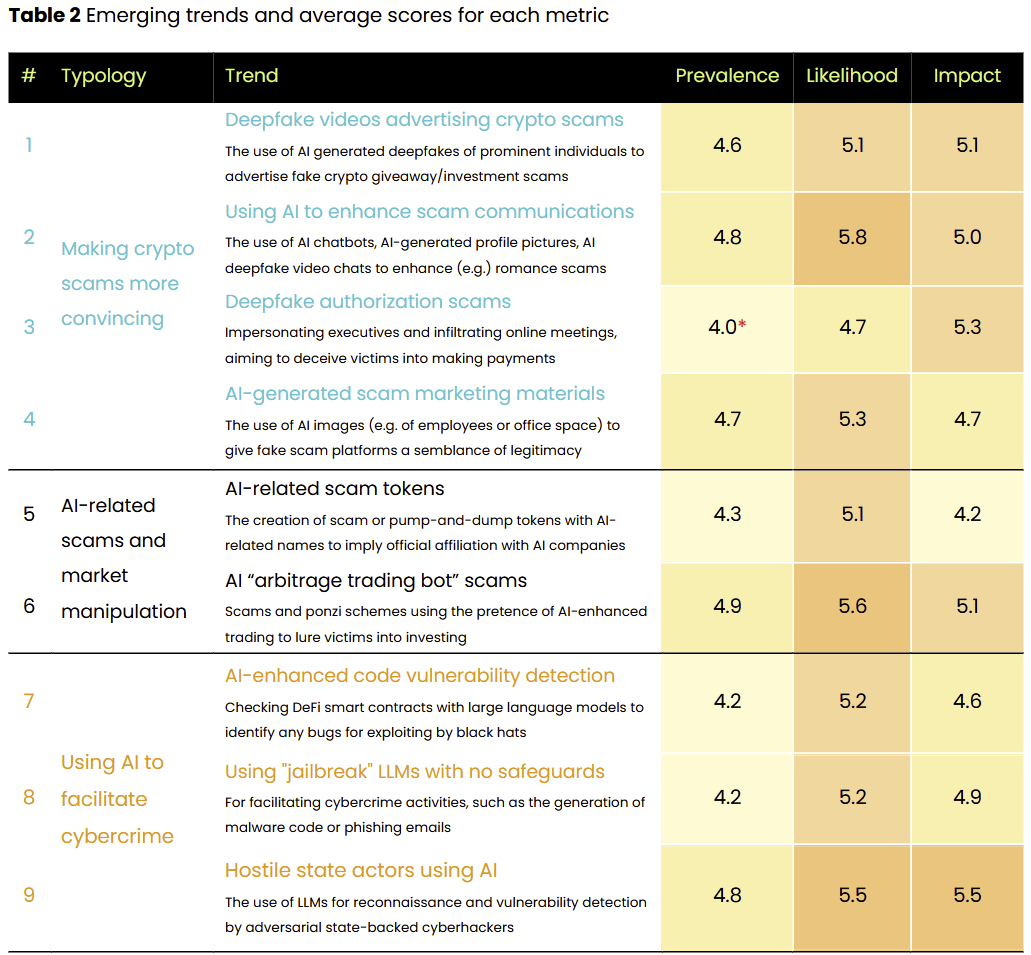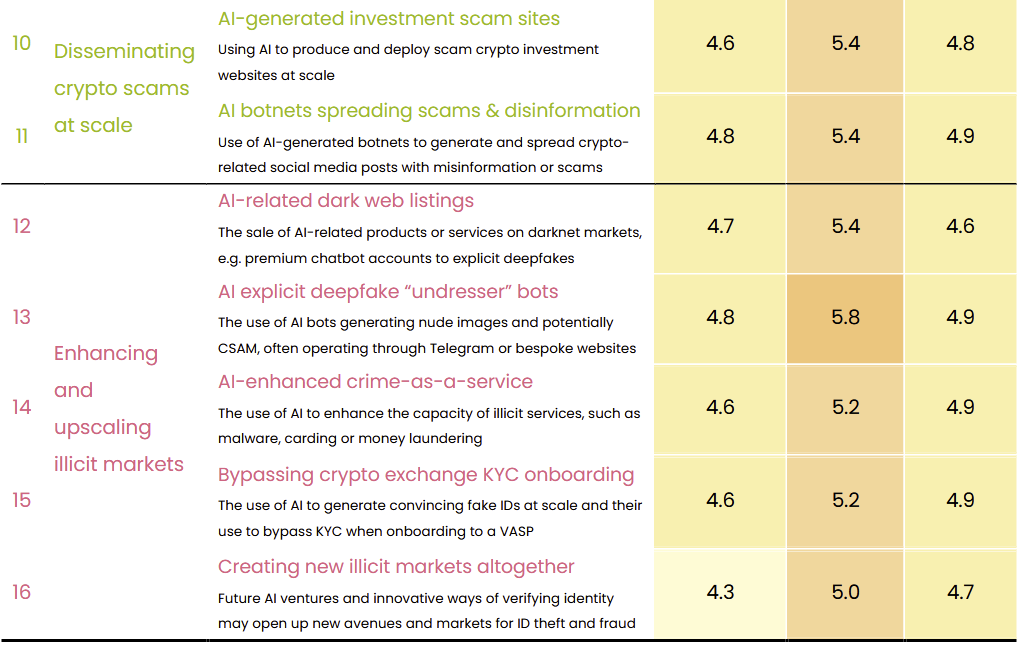AI-Powered Crime in Crypto to Grow—Here’s How You Can Fight Back

A new report, based on consultations with 40 professionals, has identified prevalent and upcoming AI-powered crime trends in the cryptoasset industry while also offering a list of best practices to stay safe.
Blockchain analysis company Elliptic just released the report after consulting with 40 participants from various sectors, such as law enforcement, cryptoasset services, regulators, tech startups, and academia.
According to the report, AI-enabled crime trends—including deepfake scams and AI-enabled illicit goods and services—are estimated to substantially intensify in the next three years, with a notable impact. However, at the same time, some participants of the consultation emphasized that some of the current trends may resolve themselves to an extent, as AI will also be used to counter illicit activities—for example, by helping develop smart contracts that are more resilient to exploits.
Here’s how the participants of the consultation evaluated current trends (from 1 (low) to 7 (high)), how they might change in the next three years, and what impact they might have.


Prevalence: the extent to which the crime trend is currently being observed.
Likelihood of the crime trend becoming mainstream in the next three years.
Impact: (e.g. financial and security implications) of the crime trend in the next three years.
Source: Elliptic
"At the moment, even the crudest scams are effective, and AI is not a fundamental requirement. However, AI will be used to defeat law enforcement, regulators, or private sector efforts, as well as to conduct financial crime at scale and speed," an unnamed participant of the consultation was quoted as saying in the report.
According to Elliptic, to protect themselves, various stakeholders will need to adopt a series of complementary prevention measures to ensure that the risk does not overwhelm resources, hinder legitimate consumers, or slow down the beneficial innovation of AI/crypto technologies.
Therefore, organizations will need to improve their ability to detect and mitigate AI-enabled crime risks, strengthen authentication systems, and enhance cooperation between and across stakeholders. Meanwhile, regulators will have to ensure that best practices are implemented in a balanced and feasible manner.
The report has also shared a list of stakeholder-specific best practices.
For example, virtual asset service providers and compliance professionals—besides the above-mentioned measures—are also advised to raise consumer awareness about AI-enabled crime and ensure that user interactions with AI-enabled illicit entities are flagged and investigated.
Additionally, crypto, AI, and tech businesses must prioritize the resilience of their goods or services to exploitation before they reach the market. More rigorous practices should be implemented for token listings so that projects with red flag indicators are not permitted to list themselves. The report has also stressed the importance of improving the protection of users and data privacy.
Meanwhile, for law enforcement agencies, the list of best practices also includes focusing on dismantling AI-using criminal infrastructures in their infancy and implementing takedowns against scam websites and dark services using AI to facilitate crimes.
At the same time, social media platforms, influencers, and content creators should deploy automated tools to verify the authenticity of content and establish clearer rules for influencers promoting crypto projects.
Regulators and government agencies, among other measures, should set clear expectations for AI/crypto innovators and levy sanctions against criminal networks engaging with AI.
Finally, research institutions and academia could contribute by researching the effectiveness of AI-enabled deception and associated countermeasures while also closely following crime trends.
"On too many occasions, new and emerging crime trends have been met by belated and scattered countermeasures, thereby giving criminals the edge in pursuing technology-enabled illicit activity," Elliptic concluded.